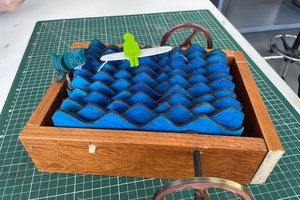i. Concept- Is the project creative, original, functional, and pushing boundaries? Does the project effectively address the selected challenge?
ii. Design- Is there a depth of design detail available (like a system design, CAD models, project test methods, etc.)? Is there base-level planning for the functionality (e.g., functional block diagram, list of specifications and descriptions of how they will be met, etc.)? How user-friendly is the design?
iii. Production- Is the project realistically reproducible (taking into consideration necessary materials, skills, and production processes)? Are the manufacturing processes detailed? Are those processes realistic for scalability?
iv. Benchmark- How well is the project impact and viability demonstrated? Are estimated costs realistic? How well does the project improve upon other currently available solutions?
v. Communication- How thoroughly have the Final Round requirements been completed? How well documented is the project? How “open” is the design?
https://www.thingiverse.com/thing:4031686 backup repository
UPDATE: Files have been broken into smaller pieces that can be printed on a 6.5 x 6.5" 3D printer bed. All these pieces are number like 1 of 20, 2 of 20 ect. I also have the whole uncut files posted as well.
The first prototype I put together was a mashup of a electric wheelchair base and a electric lawn mower. https://hackaday.io/project/101386-lawn-dog-robotic-lawn-mower
I did share this project. I really wanted to make it my own and also be able to customize the robot with other kinds of accessories.
I will continue to update this project. Eventually I would like to make molds that I can use to pop out copies of the robot in resin, until then if you need one printed then this is possible. It is not cheap because it requires a lot of filament, but it could save thousands over buying even the most basic educational platforms of this size.
I do ask that everyone who downloads and prints this project keep the name LEVi Rover and also provides credit to me the creator. This helps me keep track as google indexes photos and project posts on the internet. This is ultimately a project for school.
ABOUT THE MODEL
The model at this time in 1:1 scale is about 26 inches long. The wheels are 6 inches tall standing up. It takes around 8-10 rolls of PLA to print.
Tires- The tires are meant to me printed in plastic and then a mold made with silicon. Liquid rubber can be mixed with pigment or powdered carbon to give it a tough but flexible texture. You can however combine and print the tire and wheel together as one piece if you wanted a simpler approach.
Tracks- The tracks CANNOT be printed and used in plastic, they are too rigid. You could print them in ninja flex, but I prefer to make a cast from a mold just like discussed with the Tires. I have a file loaded with the track stretched out into a big round circle. Unless your printer is very large you will want to slice this up into 4 pieces and reorient on your printers bed. When it is printed, you will need to glue together all the pieces and fill the cracks if there are any. Then cast the large track ring in rubber. I would make a mold box that gets within a inch of the track model so that you are not wasting a gallon of expensive rubber filling the large void in the center of the mold. You may need to underside the scaled maybe 1-5 percent in order to get some tension on the wheels. Try printing in the normal shape first to check sizing.
Headlights and Tail Lights- These are basically a place holder. You can print them and put some LEDs in them for good lighting, you could leave the covers off and fill the area with epoxy to encapsulate any LEDs you put in there too.
Head/ face- The face is colored black , but the long run purpose is to print the face and then use vacuum molding to make a copy in acrylic or Plexiglas. Then you can tint that plastic with grey or black clothing dye and warm...
Read more » Josh Starnes
Josh Starnes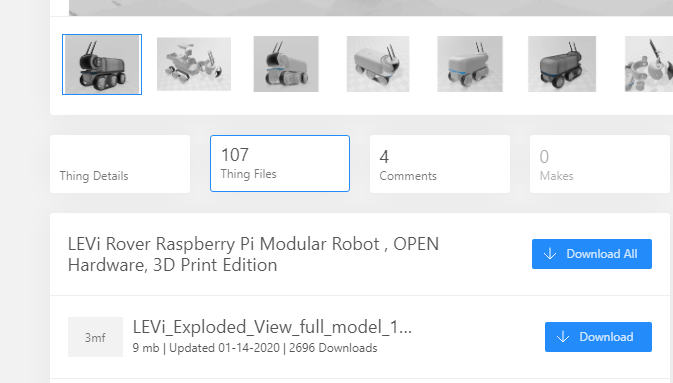
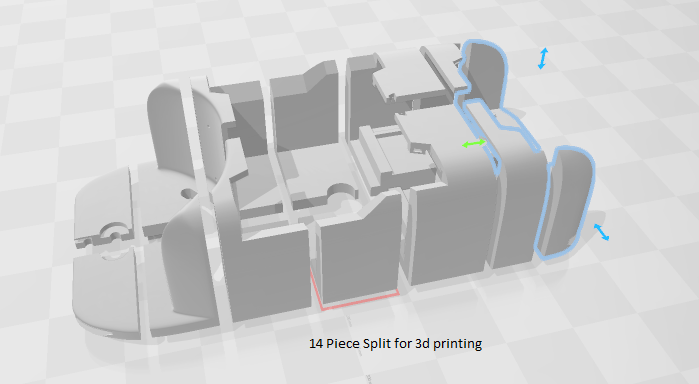
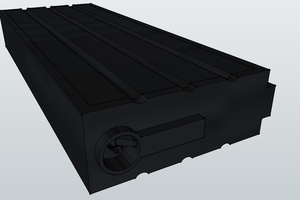
 TAIBHSE DESIGNS
TAIBHSE DESIGNS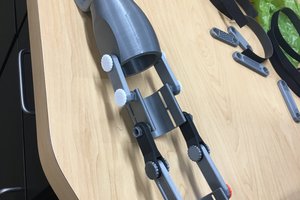
 ben.brochtrup
ben.brochtrup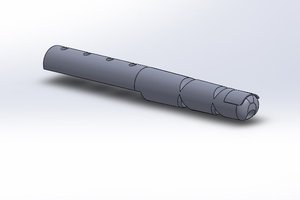
 Alan Chambers
Alan Chambers